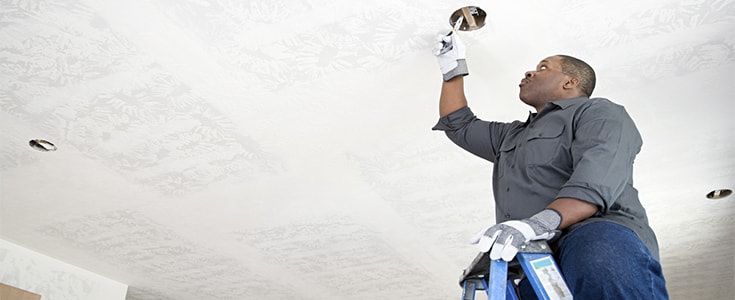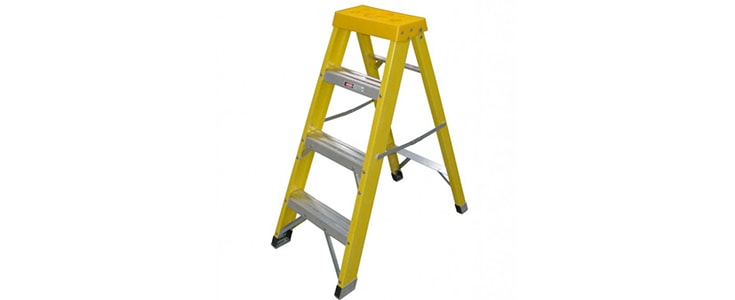Which Ladders Should Electricians Use?
08/03/2017
Like many trades, electricians are subject to their own occupational hazards, the consequences of which can range from the mildly painful to the immediately fatal. When carrying out any task that involves working with electricity, choosing the correct access equipment is a big part of getting the job done right.
The Essentials Of Working With Electricity

The obvious thing to start with is that metal ladders (such as aluminium and similar materials) should never be used when dealing with electricity, because of their conductive nature. If they come into contact with an electrical current they are liable to conduct this straight down their length, which opens up their users to electrocution. This is a particularly tangible risk for electricians, who by definition are frequently working around exposed wires and other unpredictable elements. (Our range of specialist ladders is complete with viable fibreglass alternatives for working at extreme heights.)
Another major hazards that electricians face is that of overhead power lines, especially while working at height. These consist of overhead, uninsulated power cables supported on wooden poles or insulators on metal structures. The extremely high voltages involved mean that if any part of your access equipment makes contact with these lines, it could result in severe shock or immediate death. For this reason, the Health and Safety Executive recommends that you don’t work within 6 metres horizontally of any overhead power line, unless it has been made dead or is protected with insulation.
Actual physical contact with a power line isn’t necessary to result in an electric shock, as close proximity to live wires can open you up to the possibility of an arc flash (or ‘flashover’), to occur. The effects of an arc flash can be much the same as of direct electrocution. Arc flashes can produce some of the highest temperatures known to occur on Earth, four times the surface of the sun. The risk of an arc flash increases in keeping with the line voltage running through the cables. While it can be arguably seen as relatively unlikely, it’s still a serious enough risk to warrant checking your ladders and other access equipment are made of appropriate materials, and that you exercise proper dress codes and work practices when undertaking work near the lines.
What Alternative Access Equipment Is On Offer?

Timber or fibreglass step ladders are common alternatives used by most electricians, with fibreglass often preferred where possible due to their superior strength and lighter weight, which makes them easier to move and transport. However, even when using these, care must be taken as under certain conditions (for example, if they’re dirty or damp), even they may still be capable of transmitting electric shocks from sufficiently powerful sources. Naturally, no matter the material, proper ladder safety must be observed at all times – this means that they should be secure against the surface and laid against flat, solid ground. You should also always make sure to maintain three points of contact when climbing.
At Browns Ladders, we pride ourselves on stocking a wide range of access equipment for a variety of purposes and professions, from casual DIY to professional contracts. If you can’t find what you’re looking for, don’t hesitate to contact us or call us on 01282 615517 – we’re here to help!
Don’t forget to follow us on Twitter: @brownsladders